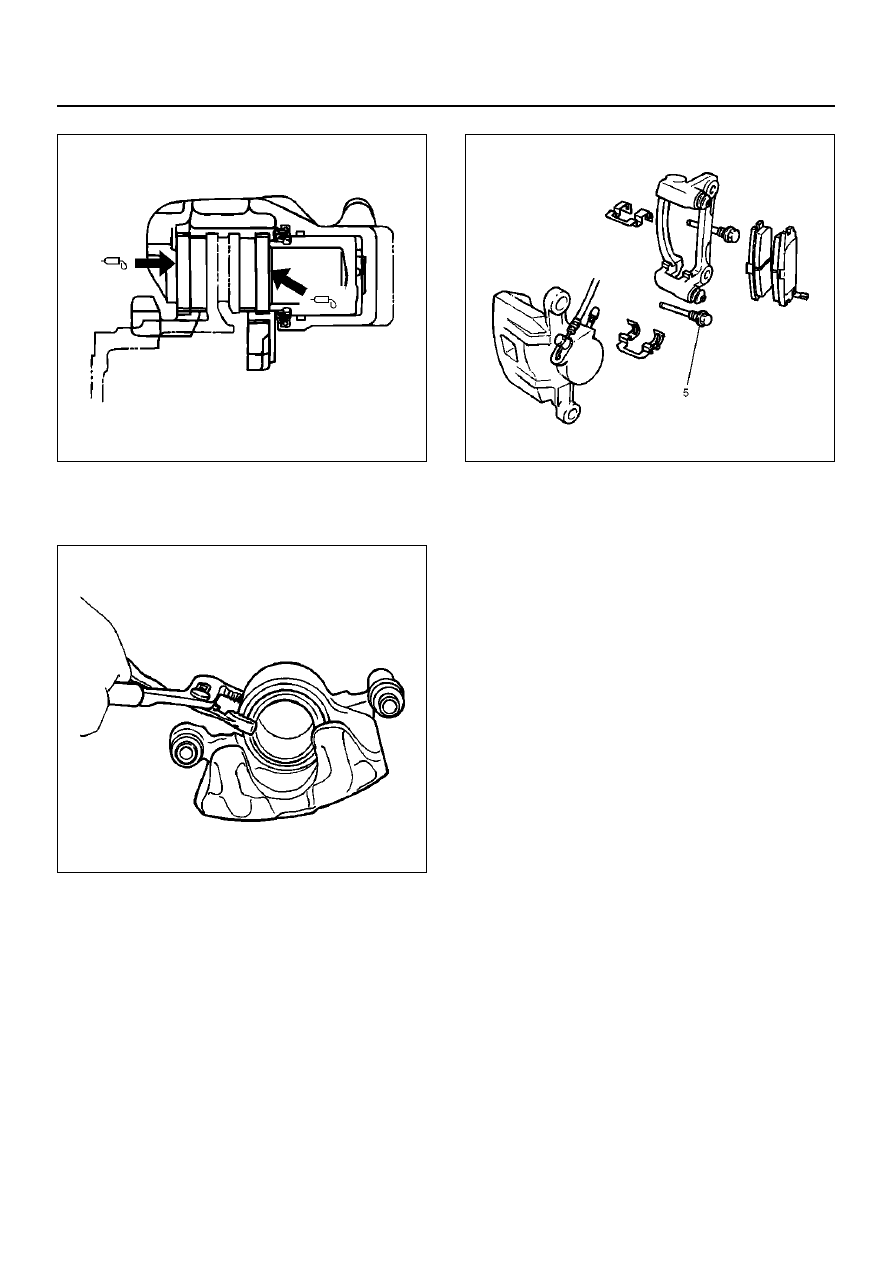Content .. 1192 1193 1194 1195 ..
Isuzu Amigo / Axiom / Trooper / Rodeo / VehiCross. Manual - part 1194

POWER-ASSISTED BRAKE SYSTEM
5C–43
306RW005
3. Carefyully use adjustable pliers to bottom the piston
into the caliper bore. Do not pull or twist the flex
hose or damage will occur.
302RS008
4. Install lock bolt (5) and tighten the bolt to the
specified torque.
Torque: 44 N·m (32 lb ft)
5. Install wheel and tire assembly, referring to Wheels
and Tires System in Section 3E.
6. Pump the brake pedal several times to make sure
that the pedal is firm. Check the brake fluid level in
the reservoir after pumping the brakes.
306RW006